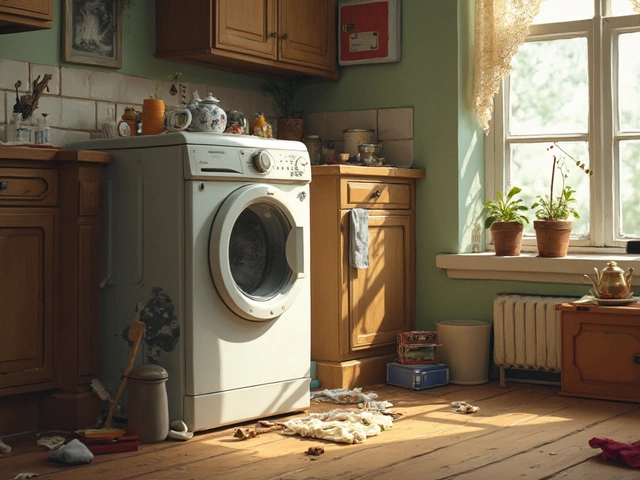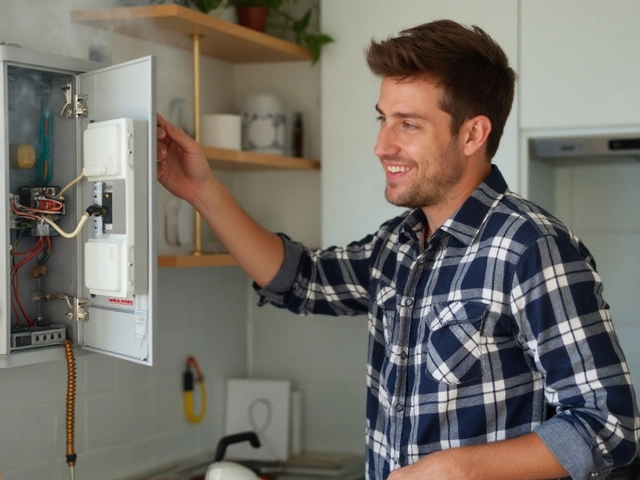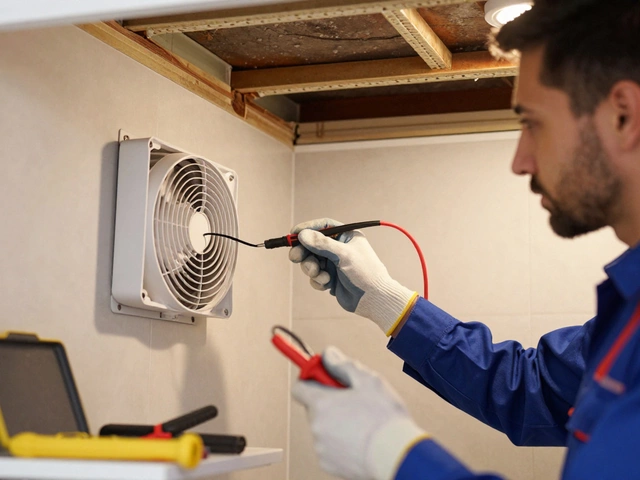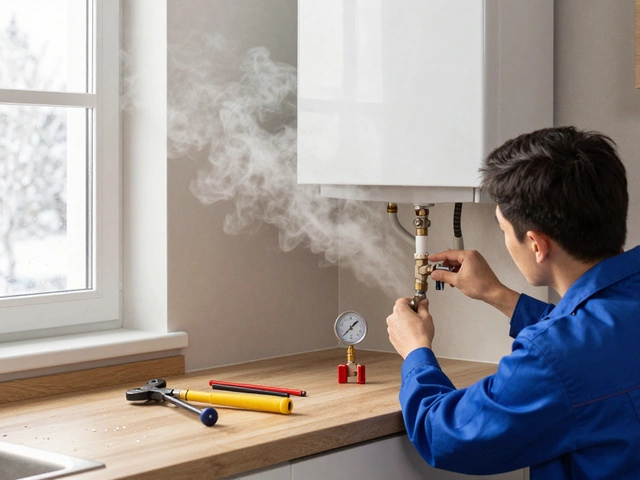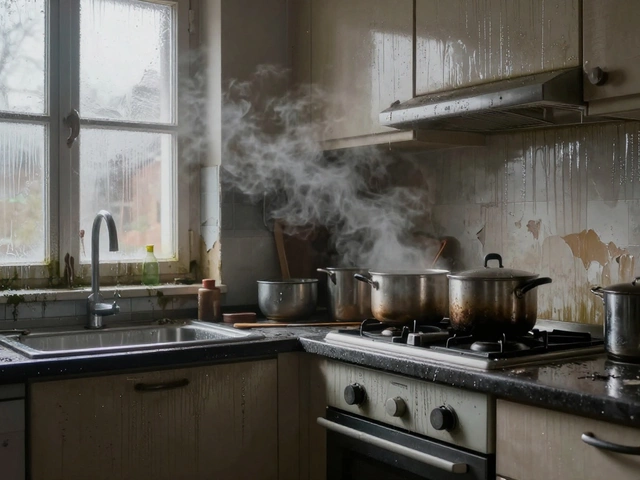Hot water at the twist of a tap is one of modern life's simplest luxuries, yet it's something we often take for granted until the moment it fails. When your water heater unexpectedly stops working, it can make even the mundane act of washing hands a challenge. Understanding why these failures happen can save you frustration and cold showers.
In this exploration, we'll dive into the most common culprits behind a malfunctioning water heater. Knowing the potential issues, from electrical disturbances to mineral buildup, can arm you with the knowledge needed to tackle these problems head-on. Whether it's a quick DIY fix or an issue for a professional, demystifying your hot water heater is key to keeping things running smoothly.
- Common Causes of Hot Water Heater Failure
- Identifying Power Supply Issues
- Thermostat and Heating Element Troubles
- Effects of Sediment Buildup
- Preventative Maintenance Tips
Common Causes of Hot Water Heater Failure
Take a moment to imagine; you're ready for a hot shower on a chilly morning, only to find that all you get is a stream of cold water. A malfunctioning hot water heater can disrupt your routine and make ordinary tasks feel like arduous errands. Understanding the most prevalent reasons for such failures can help you identify and fix issues quickly. One common cause lies in a tripped circuit breaker. It's not unusual for hot water heaters to draw significant power, occasionally overwhelming your home's electrical system. When there's a surge, your circuit breaker may flip as a safety measure, cutting power to the heater. Resetting the breaker can be the first and simplest step to resolve this.
Another culprit could be a faulty thermostat. Thermostats control the water temperature and when they falter, either too much cold or extremely hot water can sneak out of your taps. Both scenarios indicate thermostat issues that might need adjustment or replacement. Interestingly, thermostats are also prone to wear and tear over time. A minor glitch in their setting can significantly affect the water temperature output. If you're handy, checking the thermostat settings or consulting a professional technician can save you both time and discomfort.
“The lifecycle of a typical water heater is around 10-15 years. However, neglect in routine maintenance often cuts this lifespan short,” advises James Clevander, a well-respected HVAC consultant.
One overlooked but quite significant factor is sediment build-up. Homes with hard water notice this phenomenon more frequently. Over time, minerals like calcium settle at the bottom of the tank, reducing its heating efficiency. The dense sediment layer acts as an insulator, forcing your heater to work harder than needed, sometimes leading to premature breakdowns. Regular flushing of the tank can mitigate this issue, maintaining both efficiency and performance.
Yet another often-overlooked issue is the compromise of internal tank integrity. Leaks, even minor ones, are serious harbingers of impending failure. Detecting such leaks could save you from sudden heater collapses. Water leaking from the tank results not only in inefficient functioning but also indicates possible rusting inside. Once corrosion sets in, replacement is often the only solution, which means checking for leaks should be a regular part of your home maintenance.
Each of these causes of hot water heater failure provides insight into how delicate these quintessential home devices are. From power, thermostat, sediment, to integrity issues, understanding and addressing these can stretch the life of your water heater remarkably. Adopting a few simple practices to detect or prevent these issues can lead to long-term savings, both in terms of convenience and repair costs.
Identifying Power Supply Issues
In the world of water heaters, the source of energy is the heartbeat of consistent hot water delivery. A disruption in your unit's power supply can be like finding a flat tire on the morning drive to work—unexpected and inconvenient. If your hot water heater is gas-powered, the problem might lie with your pilot light. For electric models, it could be something as simple as a breaker that's tripped. Breaking down these potential issues one by one will help you figure out the problem.
Let's begin with electric water heaters. The first step in diagnosing power supply problems is to check your home's electrical panel. A breaker that has tripped is often the culprit and can easily be reset. But if it continues to trip, that could be a sign of a larger issue, perhaps related to wiring or the internal components of the heater. After ensuring the breaker is set, move on to investigating the electric thermostat on the heater itself. It's possible the unit has a faulty thermostat—an icy antagonist responsible for fluctuations in water temperature.
If your water heater relies on gas, start by examining the pilot light. When the pilot light goes out, the burner won't ignite, leaving you to deal with cold water disappointments. Always ensure safety first: before attempting to relight any pilot, check for the smell of gas, which could indicate a leak—a job for a professional. Consistent issues with the pilot light may also point to problems with the thermocouple. This small part can fail over time or become dirty, inhibiting the pilot's operation. Replacing or cleaning a thermocouple is a manageable task for those comfortable with a bit of DIY work.
As Benjamin Franklin aptly noted, "An ounce of prevention is worth a pound of cure." This couldn't be truer when dealing with power supply inconsistencies. Keeping an eye on the health of your water heater's power source can prevent unexpected disruptions and extend the life of your unit. For those inclined toward measurements and data, consider investing in a smart water heater controller. These devices connect with your home’s network, offering remote monitoring and even alerting you when potential issues arise. They're a dash of modern technology seamlessly integrated into domestic life.
If you encounter recurring issues despite your efforts to identify and solve them, it might be time to invite a professional. Electrical and gas concerns require a trained eye to ensure that your household remains safe. A certified technician will not only fix the current issue but also offer insights on upgrading or maintaining your hot water heater, ensuring that it's functioning in harmony with the rest of your home’s systems. Remember, your comfort and safety are paramount, and maintaining a healthy hot water heater system is a crucial component.
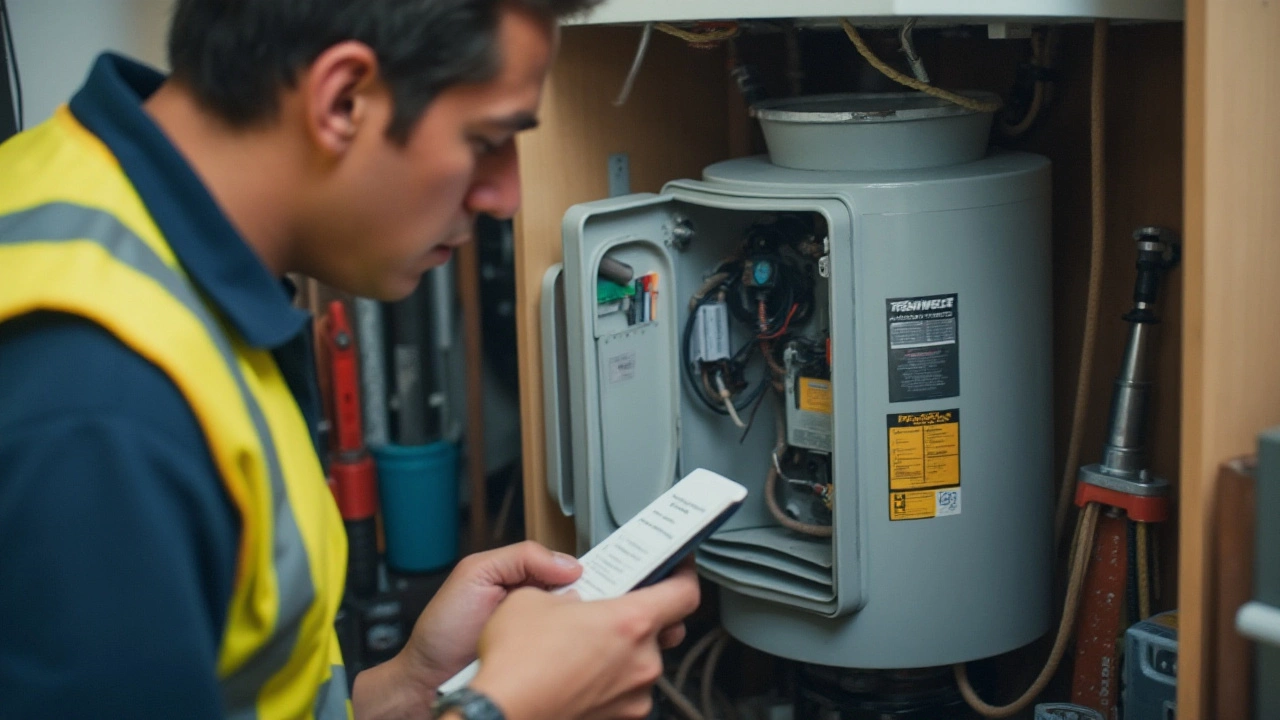
Thermostat and Heating Element Troubles
When your hot water heater stops producing hot water, the thermostat and heating elements are often the prime suspects. These components are critical for maintaining the desired water temperature, and issues here can lead to icy showers. The thermostat acts like the brain of your water heater, regulating the power supply to the heating elements and ensuring the water remains at a consistent temperature. If it's on the fritz, your water won't heat up at all or might become too hot, both of which disrupt your daily routines.
The heating elements, typically found in electric models, serve the role of physically warming the water. They rely on a healthy power connection and proper alignment within the heater's tank. A faulty connection or sediment covering can immensely reduce their efficiency. Interestingly, a study from the American Society of Home Inspectors notes that sediment buildup is responsible for numerous inefficiencies in heating elements, making them less effective and prone to burnout.
Diagnosing problems with these components requires a bit of practicality. Begin by turning off the power supply, then access the panels covering the thermostat and elements to inspect for visible damage or disconnections. A multimeter can be your best friend here, testing for electrical continuity. If this sounds like Greek, a trusted handyman might be your go-to. It’s worth noting that Alan O’Neill, a seasoned plumbing contractor, mentions that "regular maintenance checks can preempt many common element problems."
Repairing or Replacing Components
Repairing these parts is not always feasible depending on the extent of the damage, which makes replacement a common task. Ensuring you procure the right parts that match your water heater model is crucial, as improper fittings can exacerbate problems instead of resolving them. When replacing a thermostat or heating element, it’s essential to double-check their ratings, ensuring compatibility with your system's voltage and wattage requirements. Improper installations can lead to further breakdowns or even safety hazards.
Once you've secured the correct parts and reviewed a guide or manufacturer instructions, armed with your trusty set of tools, you can start the replacement process. Usually, it only involves basic steps: shutting off the breaker, accessing the faulty elements, swapping them out for new ones, and reconnecting the wires with care. After everything is reassembled, don't forget to turn the power back on and test the system's functionality, ensuring that your hot water returns with its comforting embrace. Fiddly as it might seem, a steady hand and attention to detail can save you significant repair costs down the road, assuring you of consistent hot water flow.
Effects of Sediment Buildup
When you consider the role your hot water heater plays in daily comfort, maintaining its efficiency becomes vital. One sneaky culprit in many water heater woes is sediment buildup. Found naturally in water, minerals like calcium and magnesium can gradually create a layer of sediment at the bottom of your tank. This might seem harmless at first, but it can spiral into several serious problems that affect both the performance and lifespan of your water heater.
This layer of sediment essentially acts as an insulating barrier between the heating elements and the water itself, compelling your heater to work overtime to reach the desired temperature. Such constant overworking results in higher energy bills, since more power is consumed to heat the water. Not to mention, users often notice an annoying reduction in available hot water, especially during chilly months when its demand spikes. Sediment’s propensity for absorbing heat before the water does slows down the whole process, sometimes causing the water to stay lukewarm at best.
In severe cases, sediment buildup can lead to heartrending popping or rumbling noises emanating from the heater. These ominous sounds occur as the moisture inside bubble beneath the sediment layer. The trapped steam creates the clanging noise, which is also a herald of possible wear and tear within your tank. This almost never leads to a tank explosion, but it surely stands as a warning that your water heater might need some attention. Ignoring it might push you into unplanned expenses when small, manageable problems inflate due to neglect.
The best defense against sediment woes is routine maintenance. A simple solution involves regularly draining your tank—a process that helps flush away the accumulated debris. Many experts advocate performing a full flush annually, while others recommend a mid-year mini-flush to keep things in check. This simple task could extend the life of your heater by several years. Many folks also opt for water softeners as a longer-term solution, since they help in reducing the accumulation of these minerals in the first place.
According to the Department of Energy, “Sediment buildup not only shortens the lifespan of your water heater but can also reduce its efficiency by over 30%.” This statistic underscores why sediment mitigation isn’t just an optional task, but a necessity in water heater upkeep.If you reside in an area with hard water, keeping an eye on sediment levels becomes even more critical. Hard water carries higher mineral content, meaning it speeds up the buildup process. Regular inspection, ideally every six months, will help you stay one step ahead. You can even consider anti-scale devices that attach to your water pipes. These gizmos help prevent the minerals from crystallizing and collecting.
Taking steps against sediment not only ensures that you enjoy seamless access to hot water but also furnishes your home with energy savings. It’s a win-win, with minimal effort required on your part. Next time you hear a grumble from your trusty heater, think sediment first—it’s surprising how much impact those tiny particles can wield!

Preventative Maintenance Tips
Thinking ahead when it comes to your hot water heater is all about extending its life and ensuring it operates free from hiccups. Let's face it: the hustle and bustle of daily routines leave little room for surprise cold showers. Dedicate some time to regular upkeep, which doesn't just save money over time but also grants peace of mind. The process begins with inspecting your system, which is often overlooked. At least twice a year, take the time to examine your heater for any obvious signs of rust, leaks, or corrosion around the tank or pipes. This initial step can alert you to potential issues before they escalate into bigger problems.
Next, don't forget to flush the tank – even if that's not something in your usual toolkit. Sediment from minerals in the water supply builds up at the bottom of the tank and affects efficiency over time. This can lead to clogs, reduced capacity, and annoying noises. By draining and flushing your water heater annually, you not only improve its efficiency but also the consistency of your hot water supply. To do this, turn off the power and the cold water supply to the heater, connect a garden hose to the drain valve, and allow the tank to empty. If you're unsure, visually inspecting the water that comes out can tell you a lot. Clean water means you're in good shape; rusty or murky water suggests it's time for more frequent maintenance checks.
Another vital component not to be ignored is the pressure relief valve, often abbreviated as T&P valve. This safety mechanism opens to relieve pressure if the tank overheats, which prevents potentially dangerous situations. Testing the T&P valve regularly can confirm it's operational. Simply lift the valve's lever and let it snap back – this should release water into a discharge pipe. A lack of water or dribbles rather than a flow could indicate a faulty valve requiring replacement. This is one task where calling a professional to handle the intricacies might be wise.
"Regular maintenance is the key to prolonging the life of any appliance," says renowned home repair guru Bob Vila in his guide to household protection. "Few things are as satisfying and essential as a consistent hot shower, and keeping your water heater in check is a big step towards that consistency."While these tasks are relatively straightforward, it's also smart to consider a professional evaluation every couple of years. Experienced eyes might spot wear and tear or potential issues that aren't so obvious to the untrained eye. Moreover, a professional can check electrical connections and thermostat settings with tools and expertise that ensure safety and functionality. Such checks can uncover less obvious issues, like failing elements or improper venting, which influence the heater's longevity.
A proactive maintenance schedule is like putting a reliable security fence around your comfort zone. With these troubleshooting and maintenance tips, you'll keep your appliance functioning optimally, save on energy bills, and avoid the unwelcome surprises of sudden disruptions. Keeping hot water flowing isn't just about dealing with breakdowns; it's about preventing them with thorough and thoughtful care.



